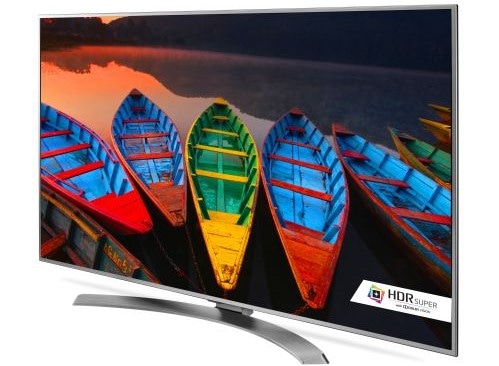What Is HDR?
Posted on May 22, 2018
By Alison P
 Technology moves quickly
Technology moves quickly, and it seems like there's a new tech-related acronym popping up every week. We understand that it can be difficult to keep up, so we're here to give you the details on one of today's most common terms in television technology: HDR!
What Does HDR Mean?
HDR stands for "High Dynamic Range," a device which is found in a variety of entertainment mediums to enhance an audience's experience. Take music, for example - a piece with a high dynamic range includes sections that are so quiet that they're barely audible, as well as parts that are loud enough to rattle an entire concert hall. This huge range of volume provides strong contrast and high intensity to create a rich and vivid listening experience for concertgoers. The same concept applies to HDR TV! Instead of sound, the dynamic range is provided by contrast between brightness levels. By using deeper darks and brighter lights, HDR displays more intensely-detailed images.
How Does HDR Work?
Instead of relying solely on a high pixel count for realistic images, HDR utilizes a high range of brightness throughout the onscreen image. Brightness is measured in units called nits, an expression of the amount of light sent by the screen and received by your eyes. The higher a TV's nit output, the greater amount of light it can produce. Depending on the model, an HDR-ready TV can emit up to 2000 nits of brightness. Color accuracy is another way that an HDR presents a more intense and realistic image. The wider color palate offered through HDR, in combination with the lifelike brightness and shading, contributes to a more realistic and detailed display.
Is HDR a Higher Resolution Than 4K?
No - the resolution for HDR is actually lower than 4K, but there's more to producing a realistic image than resolution alone. The 4K label describes the screen's pixel count, while the HDR classification describes its brightness capability and color palate. Many TVs are both 4K and HDR-ready.
 How Do I Know if a TV is HDR-Ready?
How Do I Know if a TV is HDR-Ready?
The best way to know if a TV is capable of displaying HDR is if it sports the Ultra HD Premium label. These televisions must be able to display a brightness of at least 1000 nits in order to carry that label. The show or movie you're watching must also be coming to you in either HDR10 or Dolby Vision format, with HDR10 being the format found on 4K Blu-ray as well as various
video streaming services. It's also a good idea to make sure your HDMI cables can support HDR, too.
Ready to find an HDR-ready TV to call your own? P.C. Richard & Son is the place to shop! We offer a fantastic variety of the latest
televisions from today's top brand names, all at the guaranteed lowest prices. Get the perfect TV for your space and your budget - shop P.C. Richard & Son now!
 Technology moves quickly, and it seems like there's a new tech-related acronym popping up every week. We understand that it can be difficult to keep up, so we're here to give you the details on one of today's most common terms in television technology: HDR!
Technology moves quickly, and it seems like there's a new tech-related acronym popping up every week. We understand that it can be difficult to keep up, so we're here to give you the details on one of today's most common terms in television technology: HDR!
 How Do I Know if a TV is HDR-Ready?
How Do I Know if a TV is HDR-Ready?